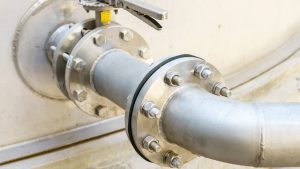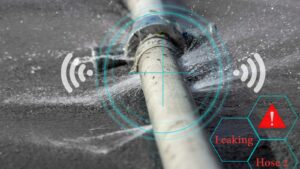Australia’s water infrastructure is definitely something that the country is proud of. Yet, this critical asset base faces unprecedented challenges and cannot be completely stopped. However, the good part is that you can always prevent it and take full control of the water assets before they escalate into some bigger issues. This is easier to say than done due to ageing infrastructure, increasing population, climate change, and regulatory complexities. This is where the water industry in Australia needs a special concept named ‘Digital Asset Management’.
This blog article will reveal everything about Digital Asset Management and its impact on the water industry in Australia.
This blog article will reveal everything about Digital Asset Management and its impact on the water industry in Australia.
We will know
- What is Digital Asset Management?
- Key Challenges the Australian Water Industry Encountered with Traditional Asset Management
- The Main Reasons Why the Water Industry in Australia Needs Digital Asset Management
- Advanced Analytics and Insights
- Maintenance Scheduling Optimisation
- Enhanced Asset Tracking
- Cost Efficiency
4. Levelling Up Water Industry Operations through Digital Asset Management
What is Digital Asset Management?
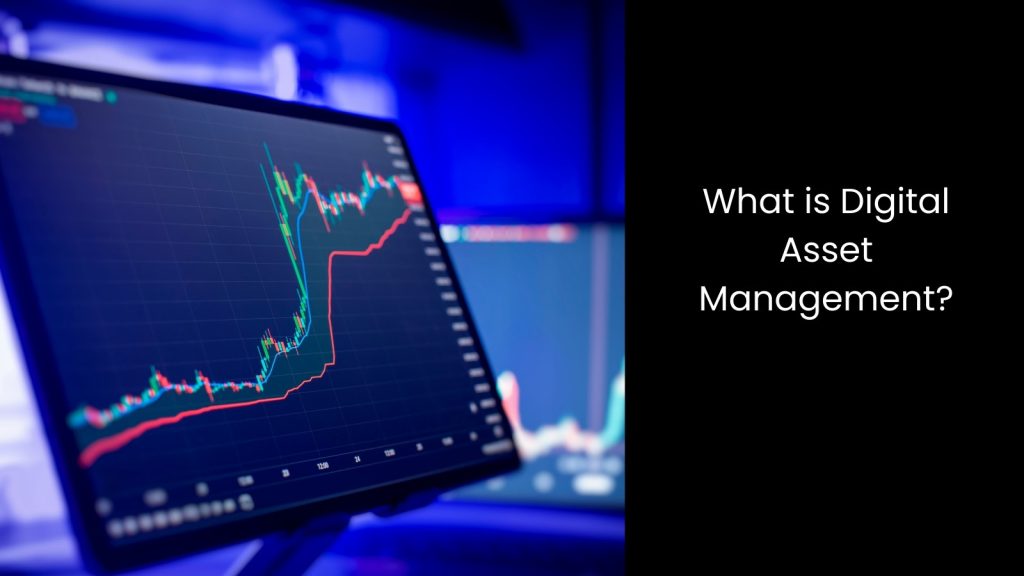
- Digital Asset Management (DAM) is a system designed to efficiently organise, store, and retrieve digital assets such as images, videos, documents, and other media files. It involves using digital tools and software to manage these assets in a centralised repository.
- In this dynamic world, various industries adopt DAM to streamline their operations by making it easier to find, share, and protect their digital content. The system works through a combination of metadata tagging, categorisation, and search functionalities.
- Mega industries and large organisations find DAM particularly valuable because it saves time and reduces errors in managing vast amounts of digital content. The popularity of DAM in mega industries stems from its ability to increase productivity, lower costs, and improve collaboration.
- With DAM, organisations can maintain consistency across their digital assets, ensuring that branding and messaging remain uniform. Also, DAM systems offer analytics that help track asset performance and usage trends, providing insights for better decision-making. The ability to protect valuable digital content with security features and backup options also adds to its appeal.
- In the realm of asset management, these digital tools have become a must-have beyond any doubt.
Key Challenges the Australian Water Industry Encountered with Traditional Asset Management

- Reporting and regulatory compliance were challenging.
- Traditional asset management usually struggles with real-time tracking of assets.
- Facing frequent data entry mistakes due to manual processes
- It was quite hard to retrieve specific asset information quickly.
- Ineffective maintenance scheduling
- Lack of real-time updates on asset status
- Had to depend on physical records and less secure data storage.
- Manual tracking and management were costly due to labour and errors.
- Poor data analysis
The Main Reasons Why the Water Industry in Australia Needs Digital Asset Management
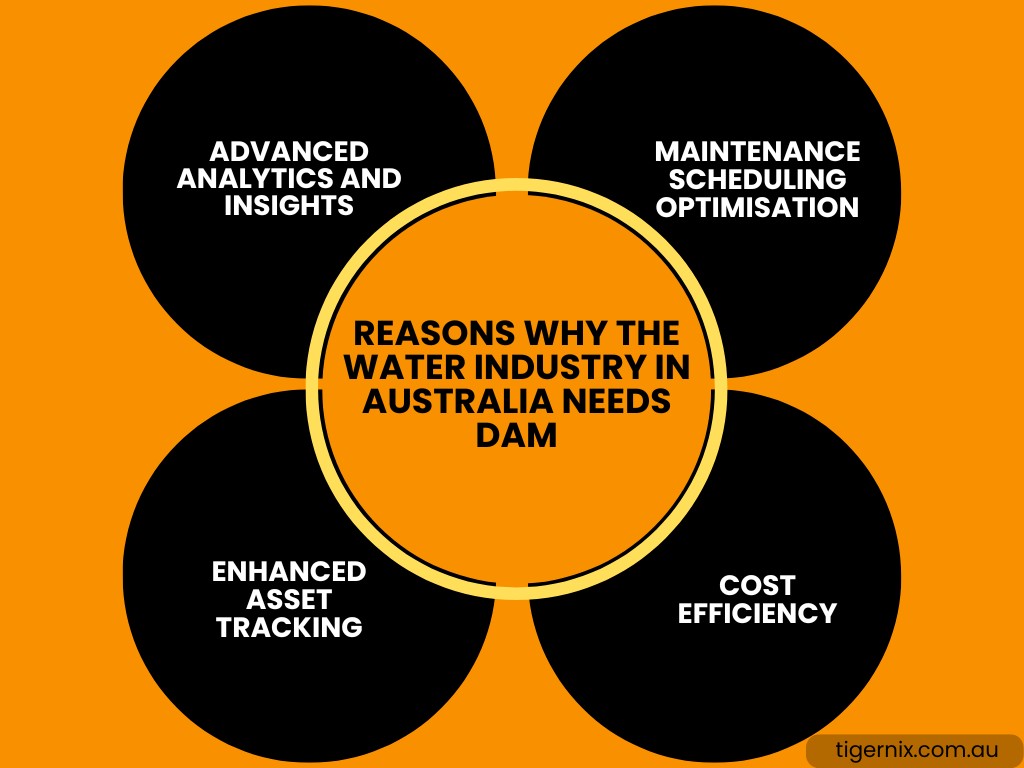
Advanced Analytics and Insights
DAM systems offer advanced analytics capabilities that transform how the water sector manages its assets. It provides detailed insights into their performance, usage patterns, and potential issues.
This data-driven approach helps the water industry in Australia make informed decisions and plan strategically. For instance, DAM systems collect and analyse data from various sources, such as sensors in pipelines and treatment facilities. This analysis helps identify trends and anomalies, such as wear and tear on equipment or inefficiencies in water distribution. With these insights, water companies can implement preventive measures before problems escalate, avoiding costly repairs and improving service reliability.
Apart from that, advanced analytics are there to help predict future asset needs and performance. This allows companies to plan maintenance and upgrades more effectively. This wise approach contrasts with traditional methods, where reactive maintenance often leads to unexpected breakdowns and higher costs.
It is quite beneficial when digital systems encourage the creation of detailed reports and dashboards that summarise asset performance metrics. The reason is that it helps managers and decision-makers understand complex data quickly and clearly. As a result, water utilities can enhance their operational efficiency, reduce downtime, and ensure a more reliable supply of water.
This data-driven approach helps the water industry in Australia make informed decisions and plan strategically. For instance, DAM systems collect and analyse data from various sources, such as sensors in pipelines and treatment facilities. This analysis helps identify trends and anomalies, such as wear and tear on equipment or inefficiencies in water distribution. With these insights, water companies can implement preventive measures before problems escalate, avoiding costly repairs and improving service reliability.
Apart from that, advanced analytics are there to help predict future asset needs and performance. This allows companies to plan maintenance and upgrades more effectively. This wise approach contrasts with traditional methods, where reactive maintenance often leads to unexpected breakdowns and higher costs.
It is quite beneficial when digital systems encourage the creation of detailed reports and dashboards that summarise asset performance metrics. The reason is that it helps managers and decision-makers understand complex data quickly and clearly. As a result, water utilities can enhance their operational efficiency, reduce downtime, and ensure a more reliable supply of water.
Maintenance Scheduling Optimisation
With DAM, the water industry can implement predictive maintenance strategies that are far more effective than traditional methods. How can it be possible?
DAM systems collect and analyse extensive data from various assets, like pumps, pipelines, and treatment plants. After examining this data, the water industry can predict when maintenance will be needed before issues become critical. For example, sensors in a pump might track vibrations and temperature changes, signalling when parts are wearing out or when performance is declining.
This allows water utilities to schedule maintenance activities proactively, preventing unexpected breakdowns and reducing overall downtime. As a result, companies can extend the lifespan of their critical infrastructure, avoid costly emergency repairs, and maintain a steady, reliable water supply.
If we recall the traditional maintenance approaches, they usually relied on fixed schedules or reactive responses. Not to forget that this can lead to inefficiencies and higher costs due to unscheduled repairs and extended equipment downtime.
DAM systems collect and analyse extensive data from various assets, like pumps, pipelines, and treatment plants. After examining this data, the water industry can predict when maintenance will be needed before issues become critical. For example, sensors in a pump might track vibrations and temperature changes, signalling when parts are wearing out or when performance is declining.
This allows water utilities to schedule maintenance activities proactively, preventing unexpected breakdowns and reducing overall downtime. As a result, companies can extend the lifespan of their critical infrastructure, avoid costly emergency repairs, and maintain a steady, reliable water supply.
If we recall the traditional maintenance approaches, they usually relied on fixed schedules or reactive responses. Not to forget that this can lead to inefficiencies and higher costs due to unscheduled repairs and extended equipment downtime.
Enhanced Asset Tracking
These modern systems have the ability to offer precise tracking of various assets in the water industry in Australia. These tools or systems can provide real-time updates on their status and location. It is a certain fact that this capability greatly improves operational efficiency.
For instance, with DAM systems, water utilities can monitor the condition and performance of their infrastructure continuously. In another way, sensors and tracking tools integrated with DAM systems collect data on factors like flow rates, pressure levels, and equipment conditions. This real-time information clears the way for operators to detect issues quickly, such as leaks in pipelines or malfunctions in treatment plants, before they escalate into more significant problems.
Likewise, this proactive monitoring ensures timely maintenance and reduces the risk of unexpected failures, which can disrupt water services and incur high repair costs. However, this capacity was not present in the traditional methods of asset tracking, as they usually involve manual inspections and paper records, which can be time-consuming, prone to errors, and less effective in providing timely information.
For instance, with DAM systems, water utilities can monitor the condition and performance of their infrastructure continuously. In another way, sensors and tracking tools integrated with DAM systems collect data on factors like flow rates, pressure levels, and equipment conditions. This real-time information clears the way for operators to detect issues quickly, such as leaks in pipelines or malfunctions in treatment plants, before they escalate into more significant problems.
Likewise, this proactive monitoring ensures timely maintenance and reduces the risk of unexpected failures, which can disrupt water services and incur high repair costs. However, this capacity was not present in the traditional methods of asset tracking, as they usually involve manual inspections and paper records, which can be time-consuming, prone to errors, and less effective in providing timely information.
Cost Efficiency
When effectively managing digital assets, the water industry can reduce operational costs associated with manual tracking, reduce downtime, and avoid costly emergencies. There is no doubt about this fact when considering the Australian water fraternity.
Traditional methods of asset management had to depend on manual processes such as paper records and physical inspections. These things can be labour-intensive, prone to errors, and inefficient. When it comes to DAM systems, they streamline these processes by automating data collection and management, which lowers labour costs and minimises errors. For example, with DAM, water utilities can track and manage assets like pumps and valves using digital tools, eliminating the need for manual data entry and reducing the risk of misplaced or inaccurate information.
Plus, DAM systems help identify inefficiencies and areas for cost-saving improvements by providing detailed analytics and insights. These insights allow the water industry to spot patterns, such as frequent equipment failures or underused resources, and address these issues proactively. The ultimate result would be that the water industry can keep a safe distance from unwanted spending related to these inefficiencies. When they save money, they can spend it on new developments in their water infrastructure or R&D projects.
Traditional methods of asset management had to depend on manual processes such as paper records and physical inspections. These things can be labour-intensive, prone to errors, and inefficient. When it comes to DAM systems, they streamline these processes by automating data collection and management, which lowers labour costs and minimises errors. For example, with DAM, water utilities can track and manage assets like pumps and valves using digital tools, eliminating the need for manual data entry and reducing the risk of misplaced or inaccurate information.
Plus, DAM systems help identify inefficiencies and areas for cost-saving improvements by providing detailed analytics and insights. These insights allow the water industry to spot patterns, such as frequent equipment failures or underused resources, and address these issues proactively. The ultimate result would be that the water industry can keep a safe distance from unwanted spending related to these inefficiencies. When they save money, they can spend it on new developments in their water infrastructure or R&D projects.
Levelling Up Water Industry Operations through Digital Asset Management
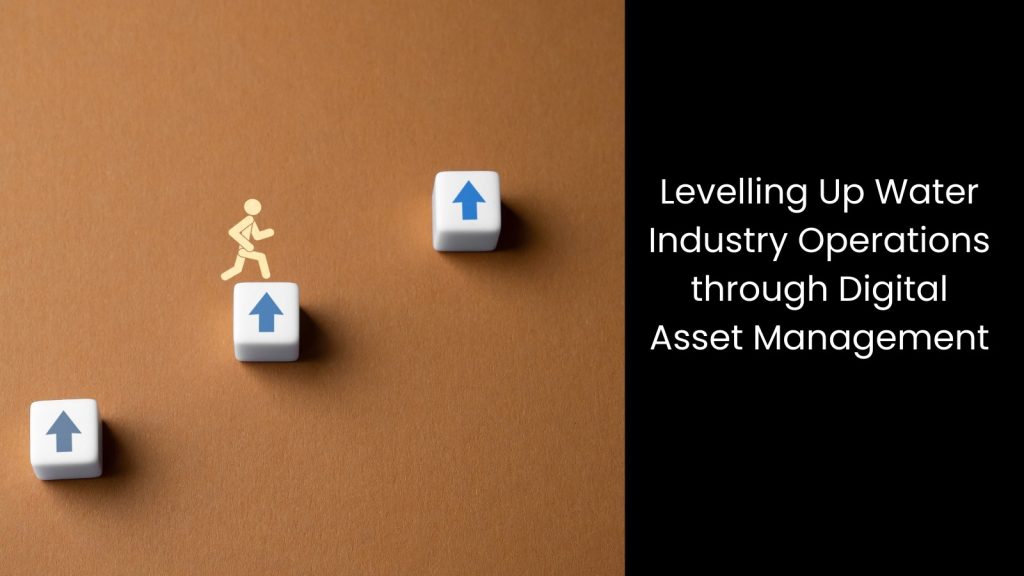
If we look into the easiest way to boost the efficiency of the water industry in Australia and level up the operational background, that is undoubtedly walking on digitalisation. The integration of Digital Asset Management systems into water industry operations marks a crucial step forward beyond any doubt. If you purchase reliable solutions or integrate digital tools into your existing systems in association with an industry expert, these DAM systems promise to revolutionise asset management in the Australian landscape.



